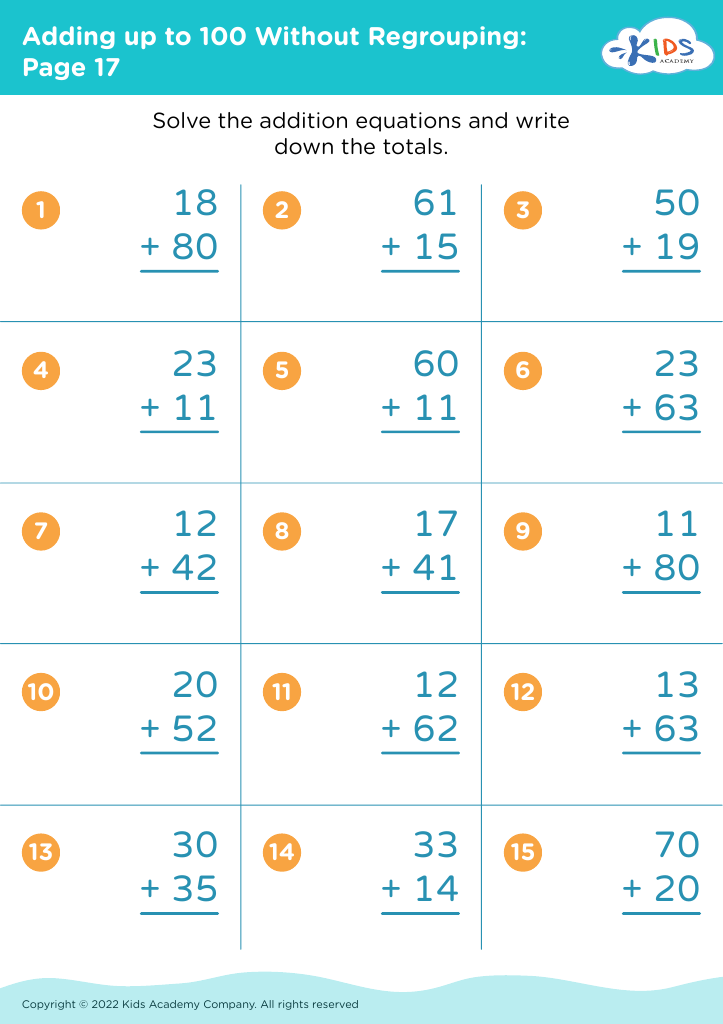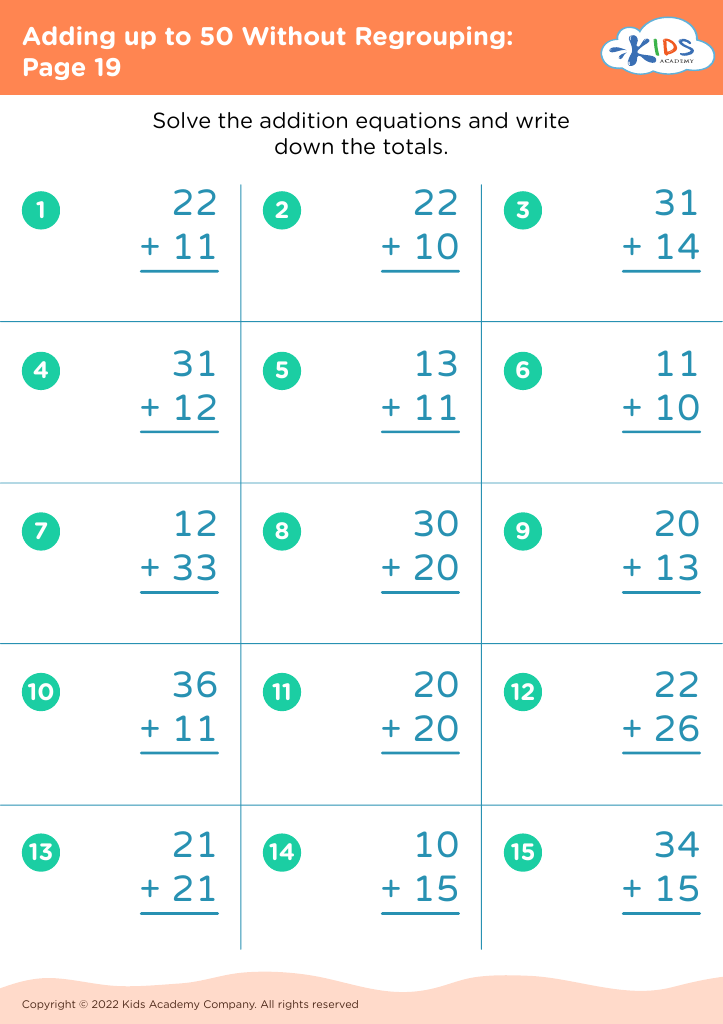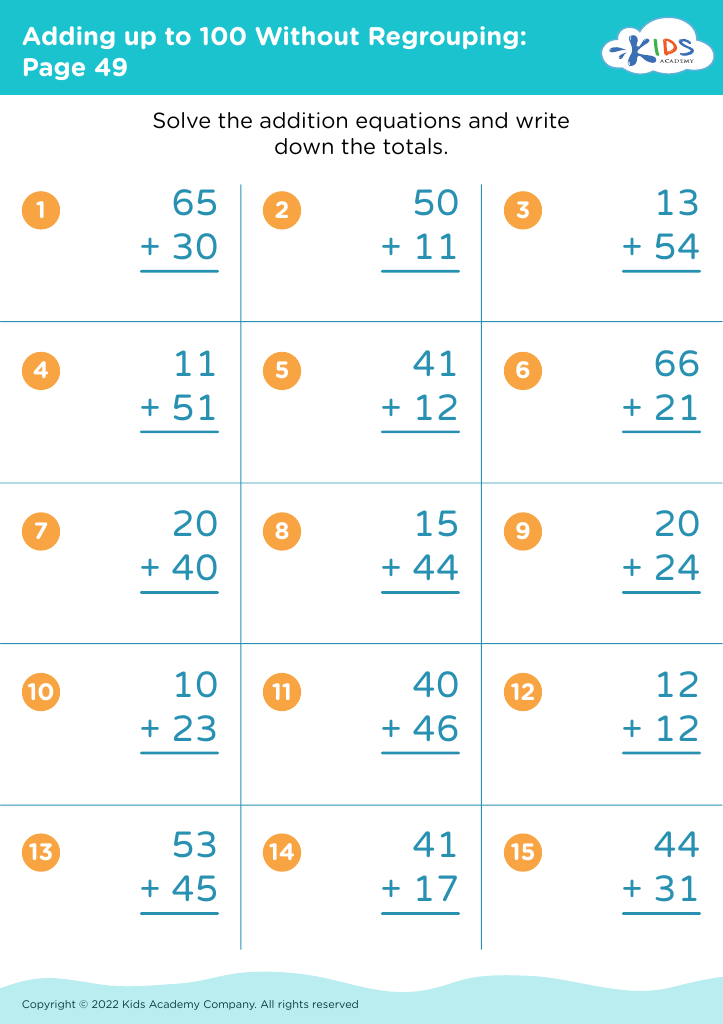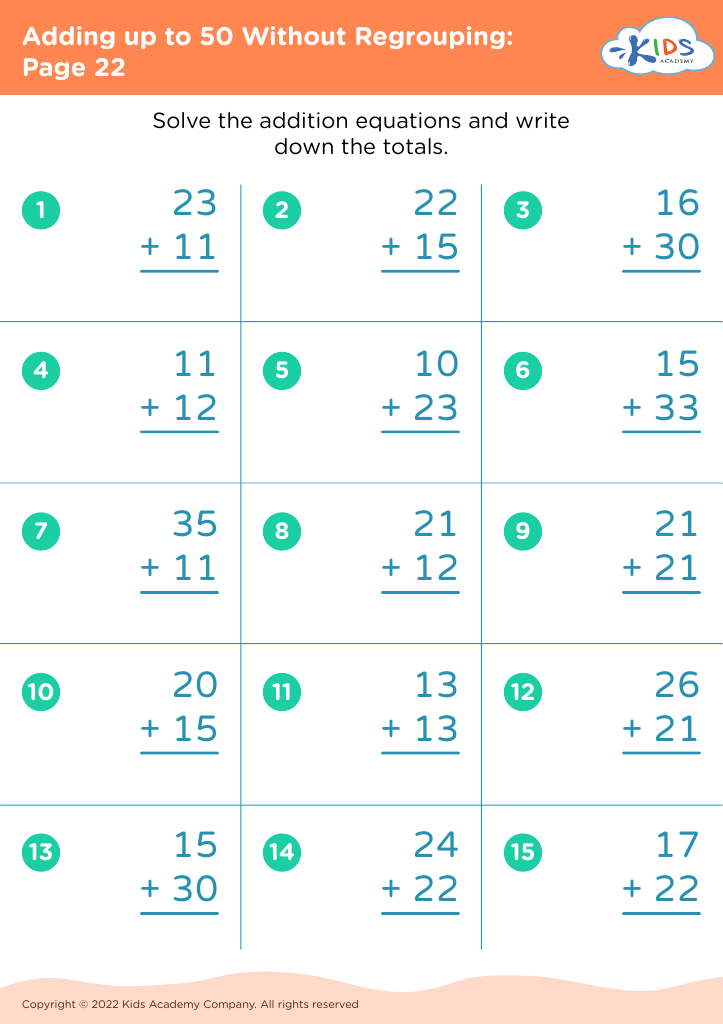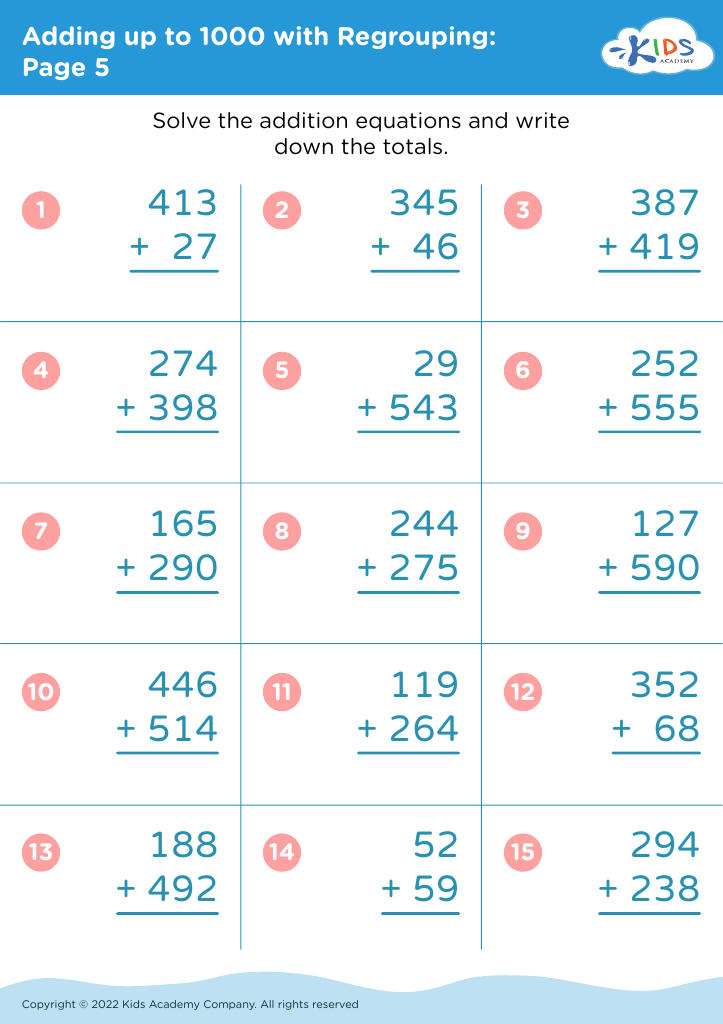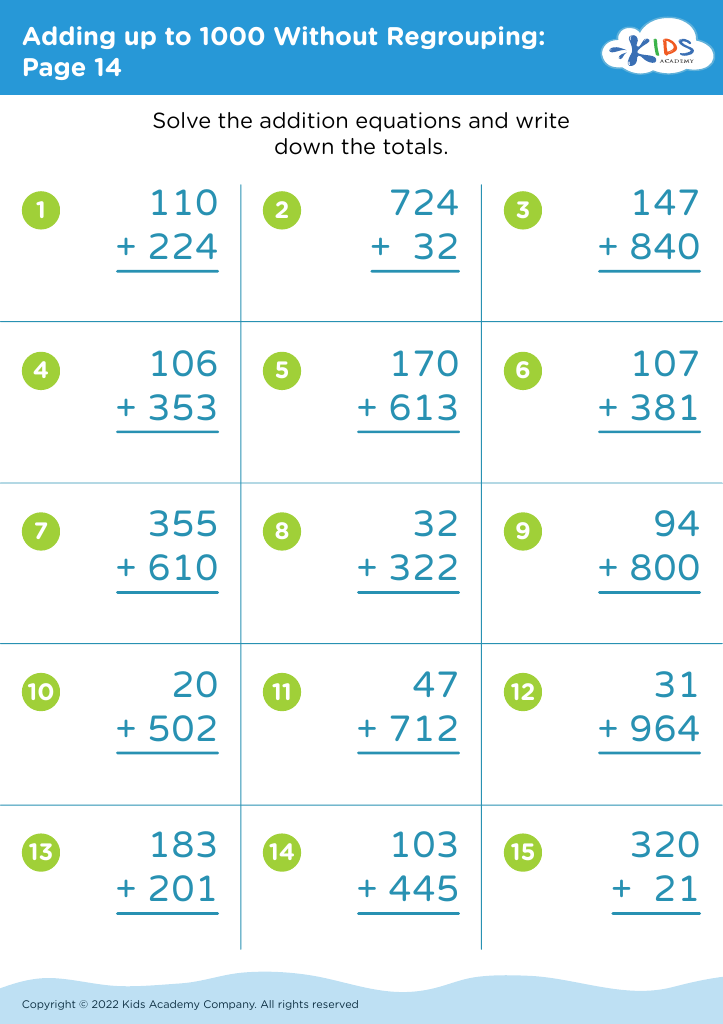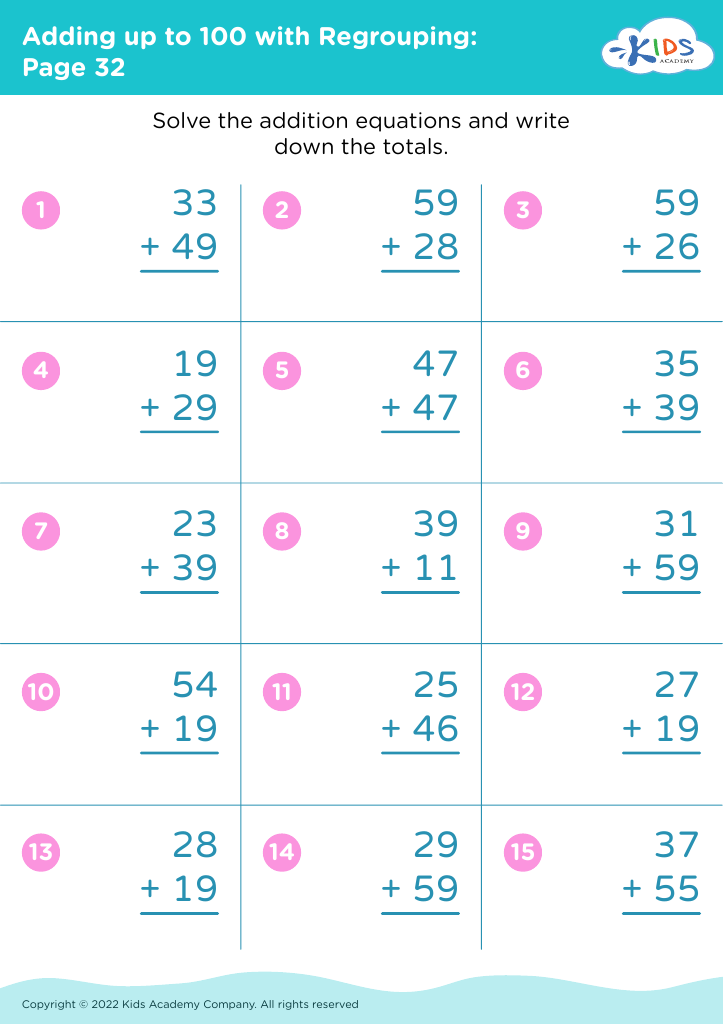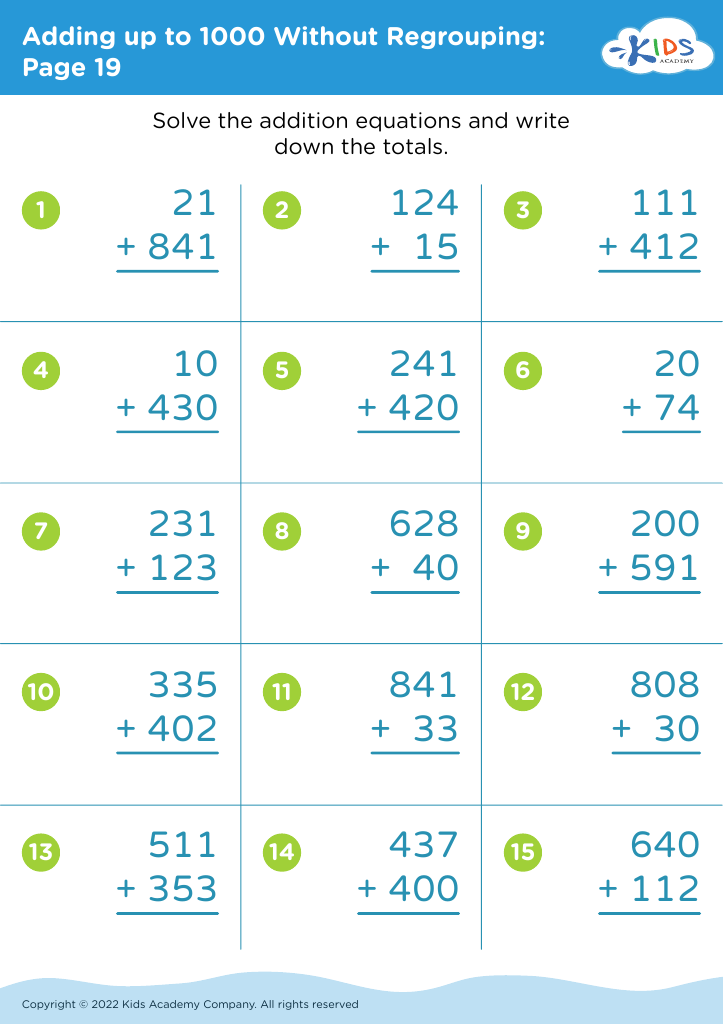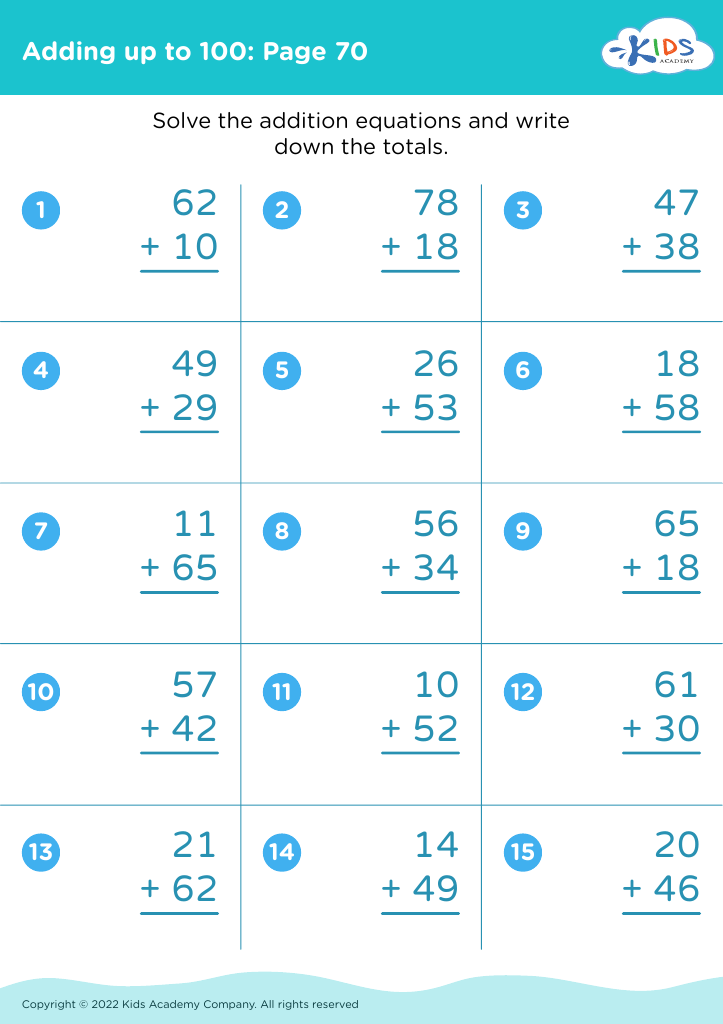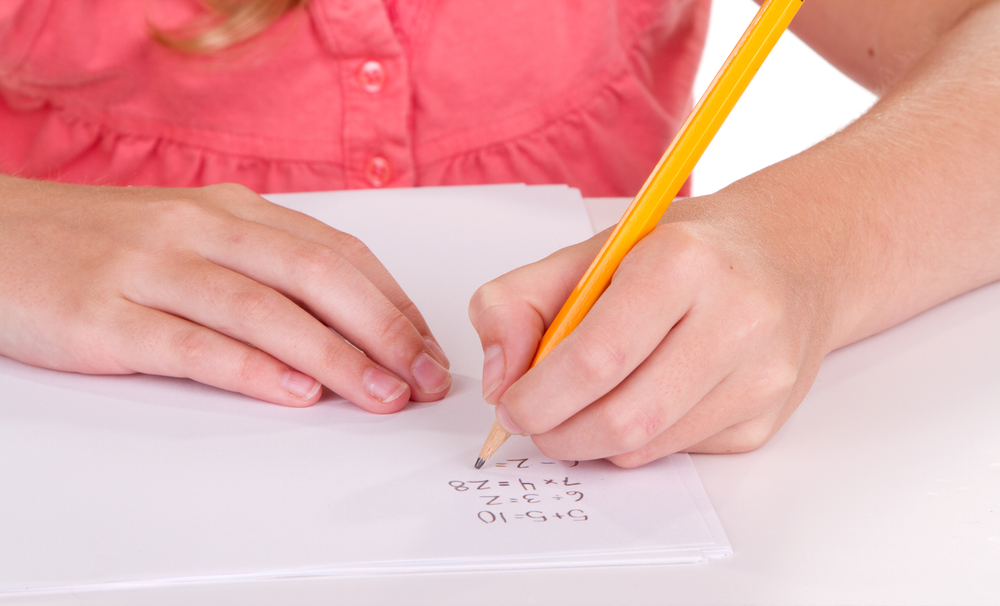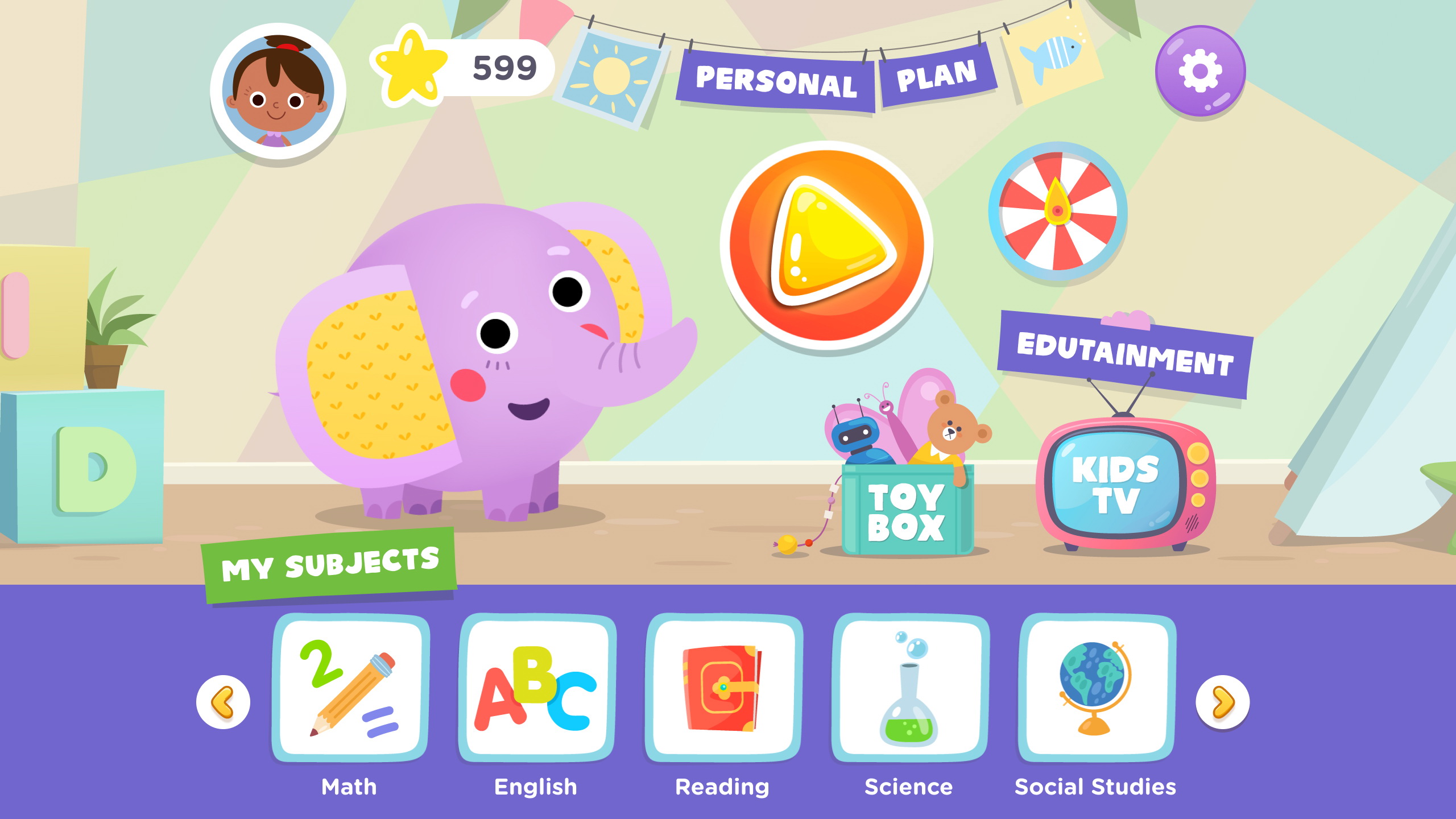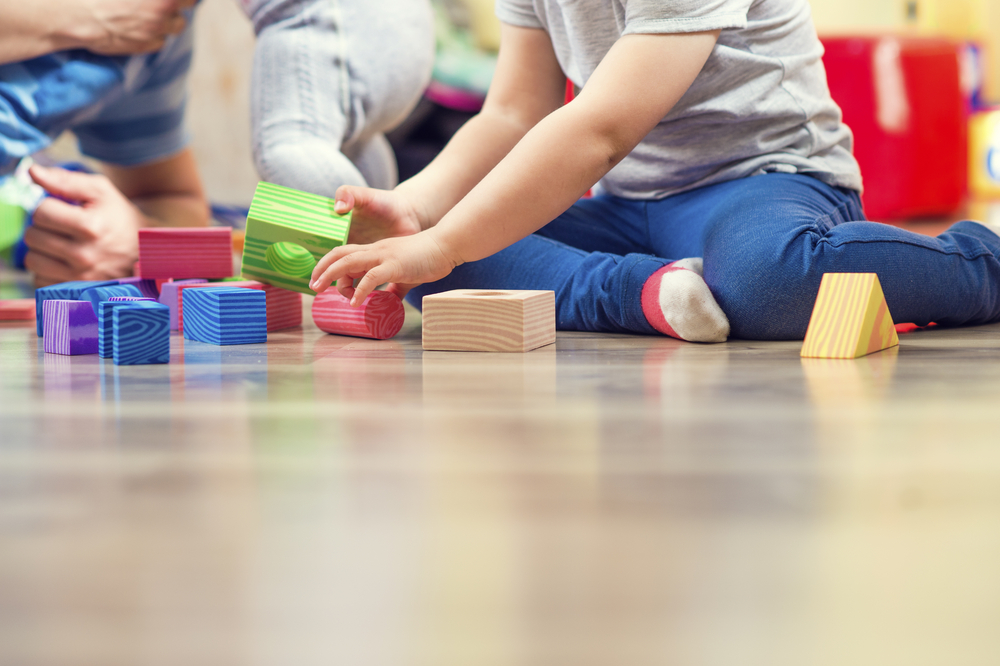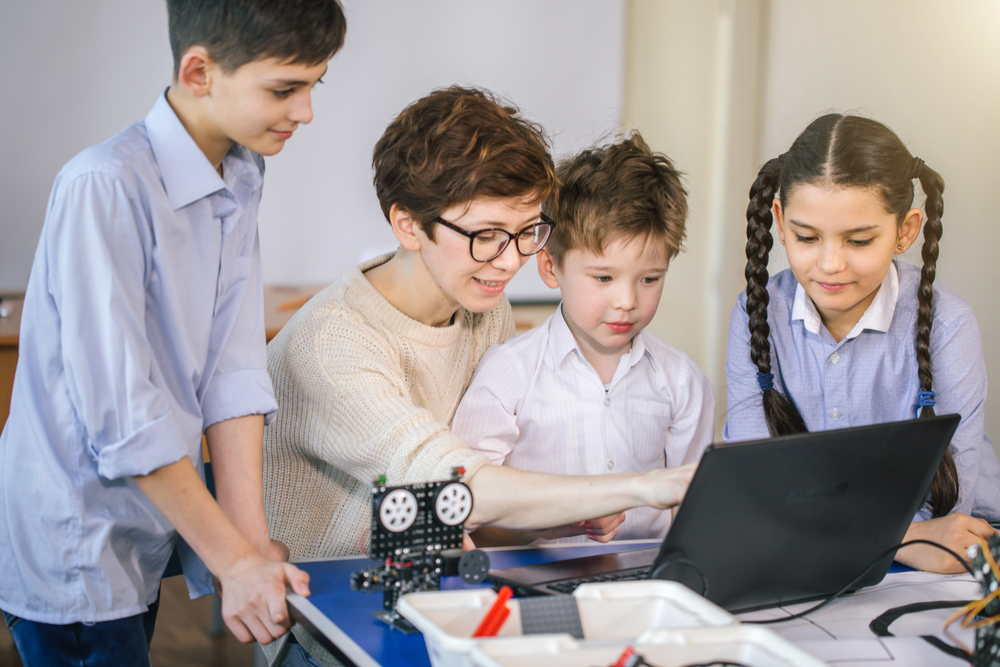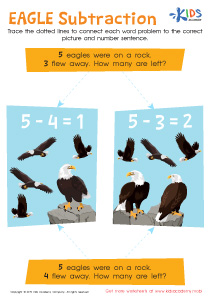Color recognition Addition Worksheets for Ages 5-7
10 filtered results
-
From - To
Introducing our Color Recognition Addition Worksheets for Ages 5-7! Designed to make math fun and engaging, these worksheets combine color recognition with fundamental addition skills. Young learners will enjoy identifying colors while solving simple addition problems, fostering both their mathematical abilities and color identification. Perfect for classrooms or home learning, these activities enhance cognitive development and strategic thinking. With vibrant illustrations and easy-to-follow instructions, our worksheets are ideal for parents and teachers looking to provide a dynamic learning experience. Give your child a head start in math with our interactive and educational resource today!
Color recognition and addition are fundamental skills in early childhood education, particularly for ages 5-7. Parents and teachers should care about developing these skills for several reasons:
First, color recognition is a crucial aspect of a child's cognitive development. It aids in the development of visual discrimination skills, helping children distinguish between different objects and shapes. This skill not only supports reading readiness by enabling children to interpret visual information more accurately but also enhances their ability to follow instructions that often involve colors, making classroom activities more manageable.
Second, teaching addition at a young age lays the groundwork for future mathematical understanding. Addition is a basic arithmetic skill that is foundational for more complex operations such as subtraction, multiplication, and division. Proficiency in addition helps children develop logical thinking and problem-solving skills, contributing to their overall academic success.
Combining color recognition and addition exercises caters to various learning styles. Using colorful objects or images to practice addition makes learning more engaging and visually stimulating for young children, fostering a positive attitude towards math. This integrated approach not only makes learning fun but also ensures that children acquire vital skills in a seamless and enjoyable manner, setting a strong foundation for their future education.
